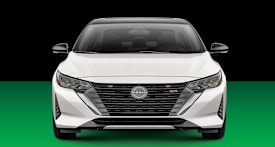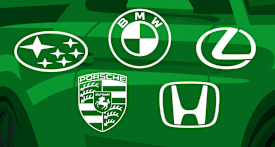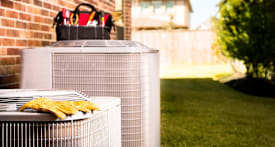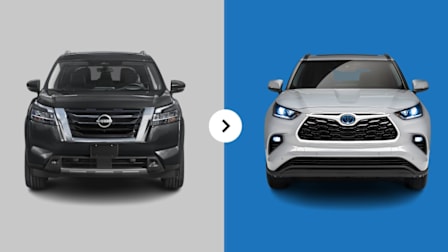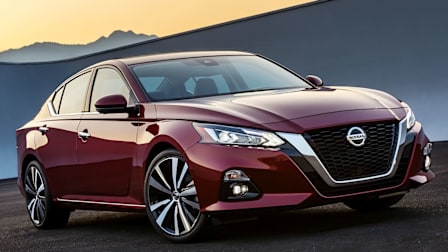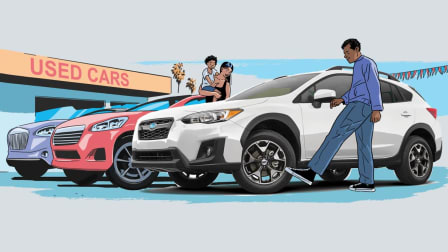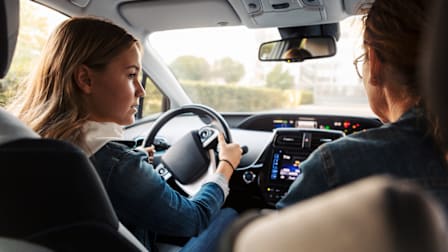The Hidden Danger of Big Pickup Trucks
Pickups are getting larger and becoming a hazard to pedestrians and drivers of smaller vehicles
In December 2020 an 18-year-old man driving a 2020 Jeep Gladiator pickup truck hit and killed Eva Barcza near her suburban New Jersey home. Barcza had been taking a walk, like so many Americans during the COVID-19 pandemic. Her husband of 60 years found her lying in a crosswalk crying in pain from broken bones and serious internal injuries. Hours later, she died in a hospital. Barcza was a teacher, a grandmother, and an avid gardener, her daughter Mary says.
The driver told the police he didn’t see Barcza in the crosswalk, and after an investigation, he wasn’t cited or charged.
In the aftermath, Mary Barcza says she started working with the group Families for Safe Streets, which is asking the New York Legislature to lower speed limits in urban areas and require warnings on larger vehicles at the point of sale that detail the risks they pose to others on the road. “I truly believe that my mother would’ve had a greater chance of survival had she not been struck by such a large vehicle,” she says.

When a driver hits someone in their front blind spot while maneuvering in a driveway or parking lot, it's called a "frontover" collision, says Jennifer Stockburger, director of operations at Consumer Reports' Auto Test Center. "Small children are especially vulnerable to frontover crashes," she says. There were more than 931 frontover fatalities between 1990 and 2019, with most victims between 12 and 23 months old, according to the advocacy group KidsAndCars.org. Over 80 percent of those fatalities involved a truck, a van, or an SUV. Here, we show what could be hidden in the front blind spot of a 2020 Ram 1500.
The hood of a Gladiator is 45.5 inches high, CR’s measurements show. Marketed by Jeep as a vehicle that can “conquer” the road, it’s part of a cultural phenomenon of enduring consumer demand for bigger everyday trucks, some of which don’t come with important safety features as standard equipment. Research has found that modern pickups—which can have tall hoods, large blind spots, and stiff body-on-frame designs, and which can often exceed 4,000 pounds—are particularly deadly in crashes with pedestrians and smaller, lighter vehicles.
Contacted by CR about the crash, Stellantis, Jeep’s parent company, offered its condolences and said its U.S. vehicles met or exceeded safety standards.
A CR analysis of industry data shows that the hood height of passenger trucks has increased by an average of at least 11 percent since 2000 and that new pickups grew 24 percent heavier on average from 2000 to 2018. On some heavy-duty trucks, such as the Ford F-250, the front edge of the hood is now 55 inches or more off the ground—as tall as the roof of some sedans. New CR data shows that drivers have poorer front sight lines, creating a blind spot that can hide a pedestrian or smaller car right in front. “These trends are alarming,” says William Wallace, CR’s manager of safety policy. “Automakers must put safety first for people inside and outside the vehicle.”
More than 42,000 people were killed and 4.8 million seriously injured on U.S. roadways in 2020, an 8 percent increase from the year before, despite a decrease in miles traveled. Pedestrian fatalities rose 46 percent over the past decade, according to the Governors Highway Safety Association, and the deaths reflect societal inequities. Low-income people are more likely to be struck; elderly pedestrians and wheelchair users are at higher risk of mortality when hit by a vehicle; and Black, Hispanic, and Indigenous people are overrepresented in pedestrian crash fatalities.
The reasons for the rising death toll are complex, with many variables, including more driver distraction. But a growing body of research indicates that the increasing dimensions of pickups may be contributing to the deadliness of crashes, especially when one hits a person, cyclist, or smaller vehicle.
Despite these risks, CR has found that pickup trucks are less likely than sedans and SUVs to have certain advanced safety systems as a standard feature. For example, automatic emergency braking (AEB) with pedestrian detection has been shown to prevent crashes. The feature has recently become standard on nearly all standard-duty pickup trucks, but it is still unavailable on the Jeep Gladiator.
We also asked the biggest manufacturers of pickups—Ford, GM, and Stellantis—why their trucks have grown so tall. A Stellantis spokesperson declined to comment. A spokesperson from Ford said the automaker had “shifted from softer lines” because “customers prefer more purposeful looks.” A GM spokesperson said buyers want more ground clearance for off-roading, greater towing capability, and more cargo space. (Those changes add weight and volume.) GM and Ford said their big trucks needed larger grilles to support engine cooling when towing trailers.
The Market Wants Bigger
Full-sized pickups command the marketplace. The three best-selling vehicles in the U.S. are trucks: the Ford F-Series, Chevrolet Silverado, and Ram 1500. Pickups now count for 1 of every 5 new vehicles sold. Within the segment, full-sized trucks have become even more popular than compact or midsized models. Full-sized trucks, such as the F-150, Silverado, Ram 1500, Toyota Tundra, and Nissan Titan, hold 79 percent of the pickup market as of 2020, up 12 percent from 2000.
Safety advocates say that truck designers could lower hoods or reduce weight, but automakers are reluctant to do so because pickups are a major source of profit. Industry analysts say that offering bigger trucks with imposing front ends has been a factor in a winning sales strategy.
“Trucks could look less tough, but you don’t want to be the one to make your truck look soft,” says Tyson Jominy, vice president for data and analytics at J.D. Power. He estimates that an automaker might make four to five times more money on a pickup than a sedan, partly because manufacturing a truck is simpler and because buyers will pay more for a pickup. “You can charge a lot for the capability, for the image.”
Automakers are also selling a lifestyle, says Angie Schmitt, founder and principal at 3MPH Planning and Consulting, a firm focused on pedestrian safety. She points to ads with trucks at construction sites, hauling massive trailers, and racing over sand dunes. “They’re not hiding the fact that they’re marketing these trucks as being really macho and a display of masculinity or prowess,” she says. “That’s a big part of the marketing, and I think that it works.”
Trucks with luxurious amenities and prices north of $60,000 can also be status symbols. “They’re absolutely not typically a choice for the average American car buyer,” says Bernard Swiecki, director of research at the Center for Automotive Research. He estimates that the typical pickup buyer’s median household income is $60,000 a year higher than the average American household’s income.
And the government provides incentives for purchasing larger trucks. They aren’t subject to gas guzzler taxes, heavy-duty trucks are held to looser fuel-economy standards than cars and smaller trucks, and small-business owners get a bigger tax write-off for buying a heavier vehicle—even if their work doesn’t require it. “There’s no shortage of accountants encouraging this loophole,” says Dave Cooke, senior vehicles analyst at the Union of Concerned Scientists.
Deadly Dimensions
In real-world collisions with pedestrians, a pickup’s tall front end and higher bumper are more likely than a lower vehicle’s to cause serious injuries, transferring energy directly to a victim’s hips and pelvis, says Becky Mueller, senior research engineer at the Insurance Institute for Highway Safety. Smaller pedestrians also have a higher risk of head injury because they’re more likely to have head-to-hood contact. And trucks are more likely to push a pedestrian down and run them over, she says. “And that, we know, is a more deadly scenario.”
A recent IIHS study of nearly 18,000 pedestrian crashes found that vehicles with a hood height greater than 40 inches are about 45 percent more likely to cause fatalities in pedestrian crashes when compared with cars and other vehicles with hood heights of 30 inches or less and a sloping front profile. Among vehicles with hood heights between 30 and 40 inches, a more vertical front-end design increases the risk to pedestrians.
CR’s testing has found that bigger vehicles in general have a harder time avoiding crashes. “Pickups and other large vehicles routinely do worse in our emergency handling and braking tests,” says Jake Fisher, CR’s senior director of auto testing. And when a truck and car collide, the car’s driver is 1.59 times more likely to die than in two-vehicle crashes without a pickup involved, according to the IIHS. By comparison, modern SUVs are no longer as deadly as trucks in crashes with cars. That’s because SUVs have become lighter and more carlike as a class over the past 20 years—just as trucks started adding weight, partly from popular features such as larger cabs.
Modern trucks that weigh less than 4,000 pounds pose the same danger as an SUV to the occupants of smaller vehicles. But a full-sized truck with four-wheel drive can top 5,000 pounds, and midsized trucks, such as the Gladiator and Ford Ranger, can exceed 4,500 pounds.
Larger pickups also reflect the transportation inequities that may put certain people at greater risk. Buyers of smaller cars that offer less protection in crashes with big trucks tend to have lower incomes. And although most truck buyers are male, an IIHS study found that women are more likely to be injured in a crash with a pickup.
Safety Sidelined
Progress has been slow to improve safety. In 2015 NHTSA proposed adding a pedestrian safety component to its New Car Assessment Program, which publishes crash-test ratings for new vehicles. Only now is NHTSA planning to implement upgrades and improvements to NCAP. The agency says that all new cars, SUVs, and pickup trucks must come with effective AEB technology by 2029, which it estimates will save at least 360 lives and prevent at least 24,000 injuries each year.
Even so, experts say that automakers are unlikely to go against consumer demand and reduce truck size. Safety advocates recommend mandating advanced safety systems for all models. States and cities should also lower speed limits and improve pedestrian and cycling infrastructure in areas where trucks share the roads with people, Schmitt says. “If our vehicles are going to be getting so much bigger and so much more lethal to pedestrians,” she says, “it also falls on road designers to do a better job protecting them.”




Editor’s Note: This article has been updated since it originally appeared in the July 2021 issue of Consumer Reports magazine.
